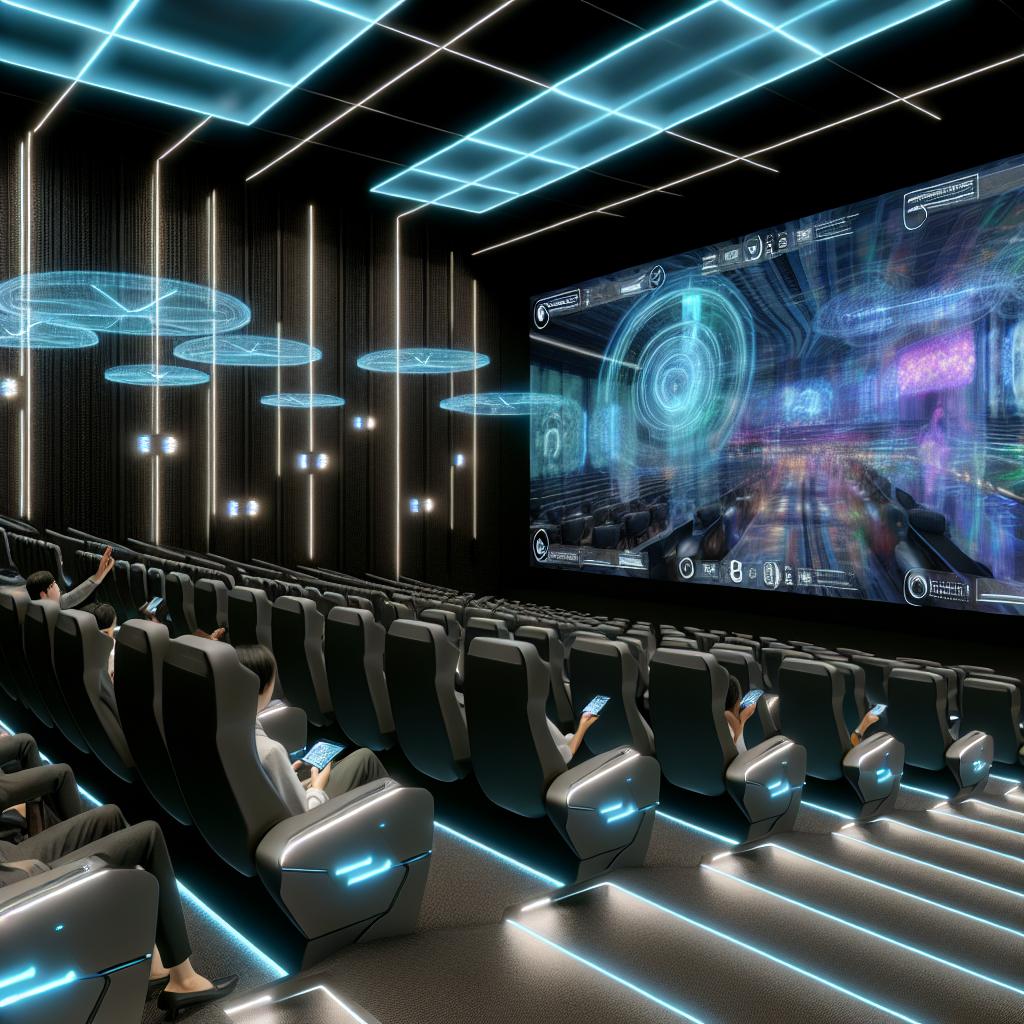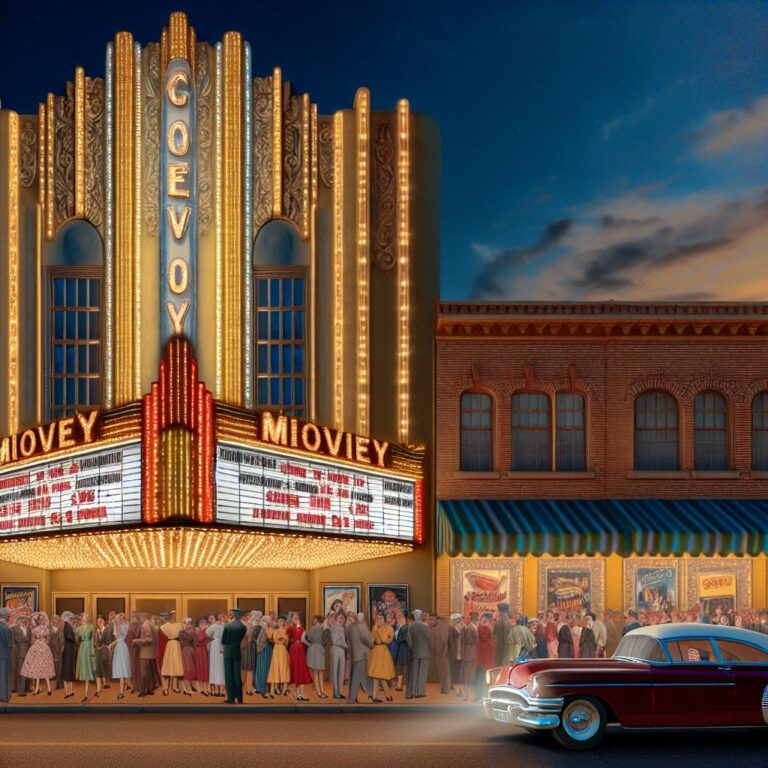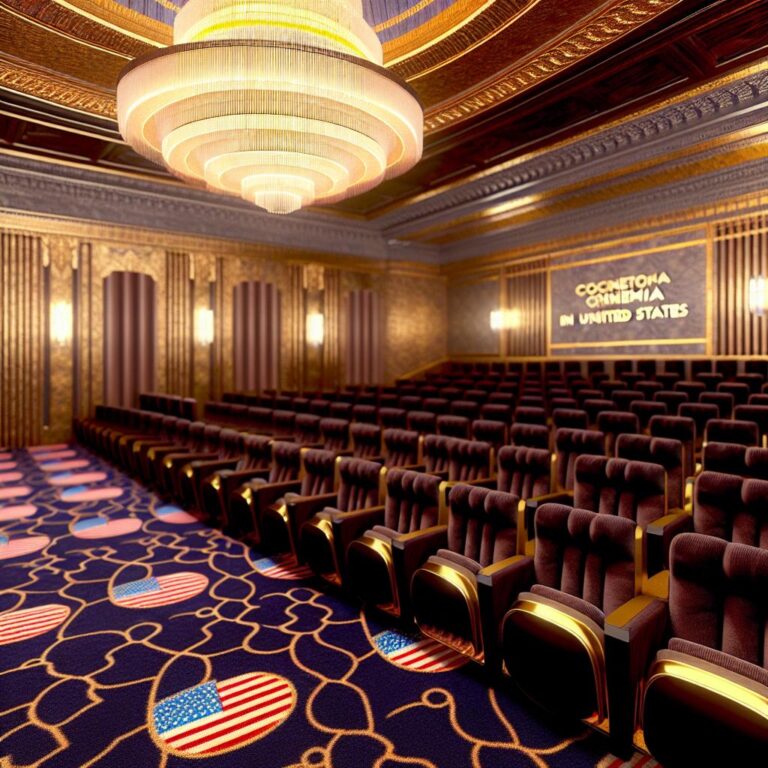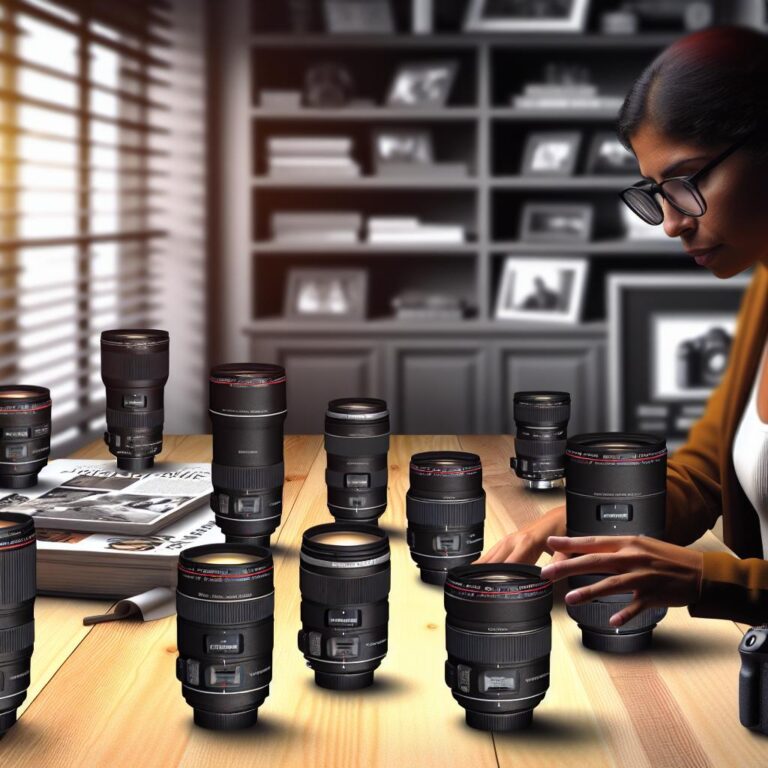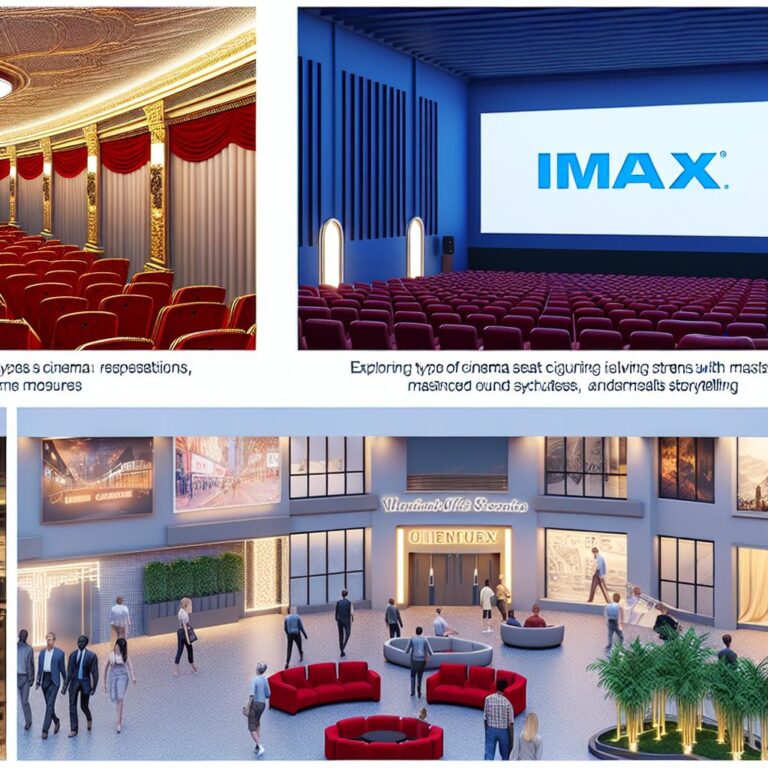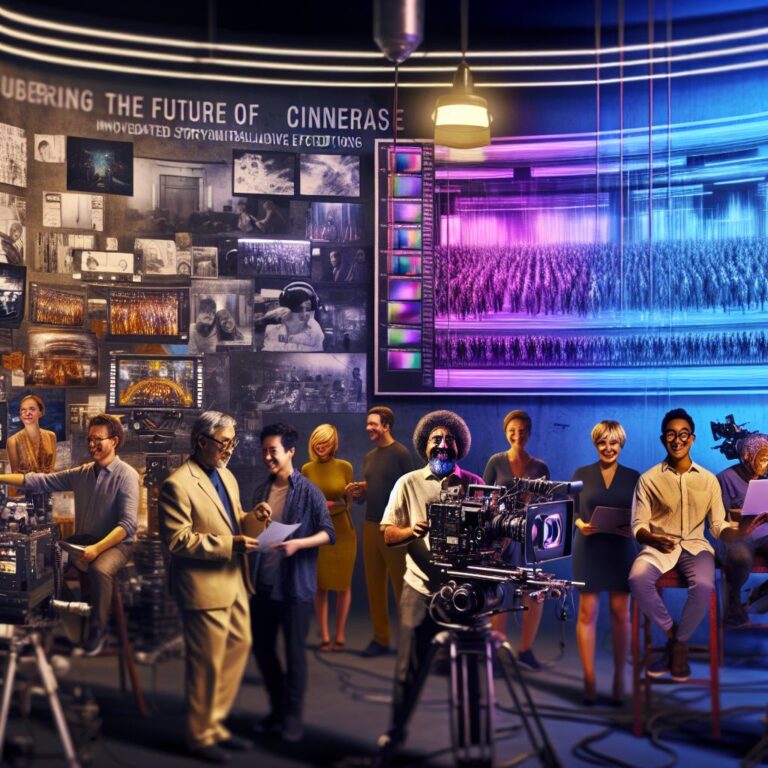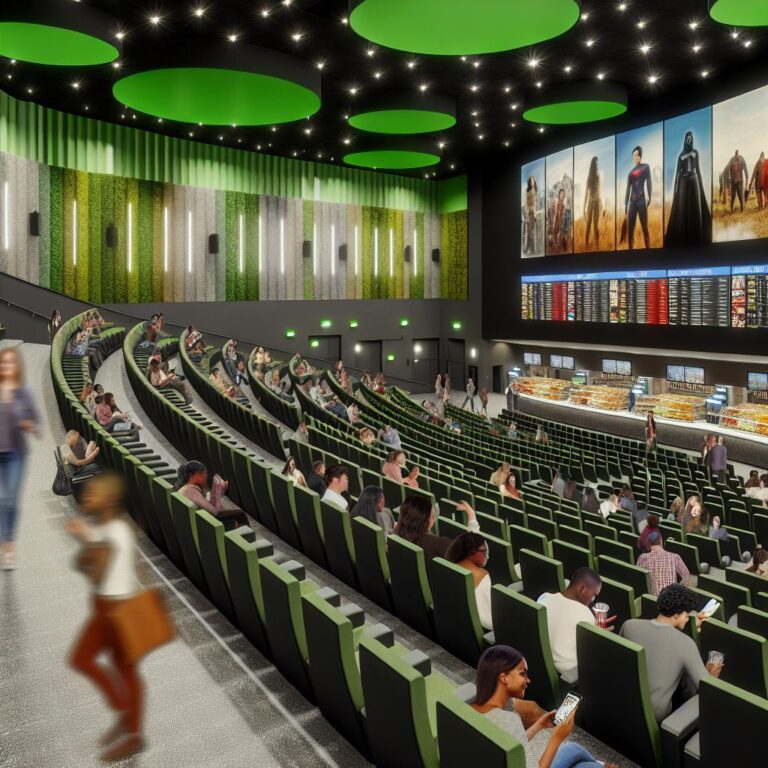Cinema technology trends: What’s Changing in 2023?
Current Innovations in Cinema Technology
- Digital projection provides crisper quality with fewer maintenance issues.
- Dolby Atmos delivers sound from multiple angles for a more immersive experience.
- Laser projectors improve image brightness and clarity.
- Cinema seats now offer comfort features like reclining mechanisms and heating.
- 3D technology enhances depth and image quality in films.
- Virtual Reality (VR) allows viewers to enter and explore movie worlds.
- Augmented Reality (AR) offers dynamic, interactive movie experiences.
Digital Transformation and Production
- Streaming affects traditional cinemas, shifting audiences to home viewing.
- Blockchain technology and digital rights management protect film distribution.
- AI is used in scriptwriting, editing, and marketing, enhancing production processes.
Engaging Audience Experiences
- Interactive movies allow viewers to influence plot outcomes.
- Analyzing audience data helps tailor films to preferences.
- 4D cinemas incorporate sensory effects like motion and smells for realism.
"Cinema technology is revolutionizing how we watch movies. In 2023, this change is massive! From laser projectors to Dolby Atmos sound, everything's getting a tech upgrade. Discover how digital systems replace analog, and see why cinemas are embracing immersive tech like VR and AR. Looking ahead, AI and streaming redefine film production and movie watching. So, what's making the cut as the 'next big thing'? Let's dive into cinema's electric future!"
What Are the Current Innovations in Cinema Technology?
Cinema today looks different compared to my childhood days! The transformation excites me as an enthusiast and expert. We're seeing changes across many areas, especially in cinema innovation. These shifts redefine how we enjoy movies.
How Are Digital Projection Systems Evolving?
We moved from analog to digital projection systems. This change brings crisper quality and easier maintenance. Digital systems reduce the hassle of bulky film reels. A single hard drive replaces stacks of film. It simplifies projection work, saving time and space.
Digital systems offer more consistency in image quality too. Unlike film, digital images lack scratches and fading. Movie buffs like me appreciate seeing exactly what filmmakers intended.
What Advancements Are Being Made in Sound Technology?
A big leap forward in sound technology is Dolby Atmos. This system delivers sound to your ears from every angle. You can hear sound move around the theater, making you feel inside the action. It’s far more than hearing sound from the front or sides. Atmos gives depth, bringing life to every scene.
Immersive audio systems play a crucial role. These systems enhance the theater experience significantly. Normal surround sound is good, but immersive systems envelop you more fully. Each sound finds its place in the theater, layered perfectly with the scene.
How Is Cinema Innovation Reshaping the Viewing Experience?
The addition of laser projectors marks a huge step forward in projection. They produce brighter and sharper images. This technology ensures vivid colors and deep blacks. Such clarity improves how we see details in each film.
Cinema seat technology also evolves to offer more comfort. Modern seats have features like reclining mechanisms and heating options. Studios understand that comfort matters. If you sit comfortably, you can focus more on the story.
These innovations redefine what we can expect from a trip to the movies. Film technology will always evolve. It reshapes entertainment and enhances how we experience art. The future seems bright, and I love watching it unfold.
How Are Immersive Technologies Changing the Movie Theater Experience?
Immersive technology is transforming our cinema visits. The trio of 3D technology, virtual reality, and augmented reality offers experiences like never before.
What Role Does 3D Technology Play Today?
3D technology has come a long way since its inception. Initially, clunky glasses and limited films muted the 3D promise. Today, advances in this technology allow for sharper images and richer textures. This evolution in 3D brings stories to life with unprecedented depth.
Key films have driven 3D forward. "Avatar," released in 2009, set new standards with its lush world-building and believable depth. James Cameron’s film showcased the magic of 3D, making audiences feel as if they were part of Pandora's world. "Gravity," another game-changer, used 3D to enhance the narrative. The floating space debris and immersive silence captured the vastness of space with stunning realism. 3D today is integral to blockbuster successes, and its role continues to expand.
How Is Virtual Reality Being Integrated into Cinemas?
Virtual reality (VR) adds a layer of immersion not possible before. It allows viewers to not just watch, but step inside the film. With VR, you can explore movie worlds from every angle. Think of stepping into a scene and choosing your viewpoints. This immersive tool turns fantasy into reality.
Cinemas are beginning to integrate VR in intriguing ways. Special VR screenings let you roam cinematic landscapes. Companies like IMAX have explored VR theaters where viewers experience altered, engaging perspectives. These integrations offer an unprecedented level of interactivity. This is no longer about watching a movie but experiencing it fully.
What Are the Potential Impacts of Augmented Reality?
Augmented reality (AR) holds promise for the future of cinema. Imagine movies that extend beyond the screen, where elements pop into the theater space. AR makes this possible, blending digital effects with physical environments.
The potential of AR in theaters can elevate storytelling. For instance, an action scene could spill over into the aisles. Characters might seem to leap off the screen, interacting with the audience. This engages viewers on a new level, offering a dynamic viewing.
Yet, AR in cinema faces challenges. It requires careful integration to prevent distraction. Technological hiccups can disrupt the experience, demanding meticulous design and testing. Despite these hurdles, AR presents significant opportunities to redefine engagement.
The journey of immersive technology is one of constant innovation. With emerging trends in filmmaking, we can expect these tools to reshape our movie experiences further. Whether it’s through improved 3D visuals, virtual explorations, or augmented reality enhancements, our connection with films will deepen, turning every cinema visit into an unforgettable adventure.
How Is Digital Transformation Affecting Film Production and Distribution?
How Has Streaming Altered Traditional Cinema Practices?
Streaming has changed how we watch movies. With platforms like Netflix and Disney+, more people choose home viewing. This shift has affected box-office sales and cinema visits. Streaming offers convenience, as viewers can watch from anywhere at any time. On the other hand, cinemas struggle to pull in audiences. Yet, some films still draw large cinema crowds. Big-budget movies, like superhero films, often get people back into theater seats. The thrill of watching on a big screen with surround sound can't be replaced by streaming.
What Innovations Are There in Film Distribution?
Film distribution is going through a major change with new technologies. One exciting development is using blockchain technology. Blockchain helps keep track of where a film goes and who watches it. This can solve many piracy issues, making it safer for filmmakers to distribute their work. Another tool is digital rights management. This technology controls how films get shared and ensures the creators get paid. Both these methods help the industry stay strong by protecting and rewarding creativity.
How Is AI Influencing Cinema Production?
AI is becoming a major part of making movies today. You might wonder how AI works in films. It helps in both creating content and promoting movies. During film production, AI can write scripts based on trends or help edit scenes. AI can quickly find what makes a movie scene work. For marketing, AI uses data to predict what viewers want to see. It can suggest films based on your past choices or forecast box-office hits. AI's impact in this field is growing and changing how decisions get made in movies. As writers, directors, and producers harness AI, the art of filmmaking keeps evolving.
How Are New Technologies Influencing Audience Engagement and Movie Experiences?
How Are Interactive Experiences Being Integrated?
Interactive cinema changes how we watch movies. It isn't just sitting and watching anymore. Now, people can choose what happens next. Think of it like a big-screen video game. Movies like "Bandersnatch" show us this new way to interact. You decide the plot, giving you some control over the story. More cinemas now offer these interactive options. They let you choose and change the movie's outcome. While exciting, this presents challenges too. Making these films is hard. Filmmakers need to create many different story paths. Plus, not everyone wants to make decisions while watching. Some viewers just want to relax.
What Insights Can Be Gained from Analyzing Audience Behavior?
Understanding audience behavior helps improve movies. Movie makers analyze what we like and dislike. They use tools like surveys and data analysis. This helps them know what kinds of movies we prefer. Data analytics shows if a film might be a hit or flop. It helps producers decide the best release time too. Knowing these insights makes for more engaging and successful films. For example, using data can show how long we watch certain scenes. This feedback helps filmmakers know what keeps us glued to our seats. By analyzing trends, they can create movies we enjoy more.
What Are the Emerging Trends in Sound and Sensory Experiences?
Sound advancements change how movies feel. Dolby Atmos adds layers and depth to sound. Sounds come from all around in the theater, making it immersive. This makes you feel inside the movie, not just watching it. New 4D cinemas enhance this further. These theaters offer motion seats and smells. You might feel wind or rain on your face. It takes going to the movies to another level. Experiences become more realistic, and every sensation feels heightened. The goal is to make you feel what the characters do. 4D cinema technology simulates real-life experiences even more. This trend aims to intensify the movie-going journey. By making it more vivid and engaging, it could draw new audiences in.
Conclusion
Cinema is rapidly evolving with digital innovations, new tech in sound, and immersive experiences. Digital projection has redefined visuals, and Dolby Atmos enhances sound quality. Laser projectors and advanced seating revolutionize our comfort in theaters. With 3D, virtual reality, and soon AR, movie storytelling becomes more engaging. The streaming boom and blockchain are reshaping how films reach audiences, while AI revolutionizes production methods. Interactive experiences and 4D tech promise deeper audience connection. As innovations continue, our ways of enjoying movies will transform, blending technology with creativity in unprecedented ways. Stay updated to catch these groundbreaking trends.

